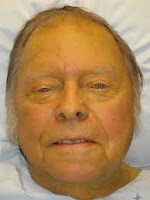Jaundice Causes and Symptoms
Jaundice is the
medical term that describes the yellowing of the skin and eyes. Jaundice itself
is not a disease, but is a symptom of several possible underlying diseases.
Jaundice forms when there is too much bilirubin in the system. Bilirubin is a
yellow pigment created by the decomposition of dead red blood cells in the
liver. Normally, the liver removes bilirubin along with red blood cells. Jaundice
may indicate a serious problem with the function of red blood cells, liver,
gall bladder or pancreas.
Symptoms
- The skin and eyes with yellow tones characterize the jaundice. In severe cases, the whites of the eyes may turn brown or orange.
- Fatigue
- Abdominal pain
- Weight loss
- Vomiting
- Temperature
If you only
have yellow skin, it could be because you have too much beta-carotene in your
system. Beta carotene is an antioxidant that is found in foods like carrots,
pumpkins and sweet potatoes. An increased level of this antioxidant is not a
cause of jaundice.
Causes
The old red
blood cells move in the liver, where they are broken down.
Bilirubin is the
yellow pigment formed by the breaking of these old cells. Jaundice occurs when
the liver does not metabolize bilirubin as expected.
The liver may
be damaged and may not perform this process. Sometimes, bilirubin simply cannot
reach the digestive tract, where it is normally removed from the stool. In
other cases, there may be too much bilirubin that tries to enter the liver at
the same time or too many red blood cells that die at the same time.
The adult
jaundice indicates:
- Alcohol consumption
- Liver cancer
- Thalassemia
- Cirrhosis
- Gallstones (cholesterol stones from hardened fatty materials or bilirubin-pigmented stones)
- Hepatitis A
- Hepatitis B
- Hepatitis C
- Hepatitis D
- Hepatitis E
- Pancreatic cancer
- G6pd deficiency
- Biliary obstruction (biliary canal)
- Sickle cell anemia
- Acute pancreatitis
- Abo incompatibility reaction
- Drug-induced immune hemolytic anemia
- Yellow fever
- Weil's disease
Other blood
disorders, such as hemolytic anemia (the rupture or destruction of red blood
cells which causes a reduced number of red blood cells in the circulation,
leading to fatigue and weakness)
An adverse
reaction or overdose of a drug, such as a paracetamol (Tylenol)
Jaundice is
also a common occurrence in newborns, especially premature babies. An excess of
bilirubin can develop in newborns because their livers have not yet fully
developed. This condition is known as jaundice with breast milk.
Diagnosis
Your doctor
will perform blood tests first to determine the cause of jaundice. Not only
does a blood test determine the total amount of bilirubin in your body, but it
also helps to detect other disease indicators such as hepatitis.
You can use
other diagnostic tests, including:
- Liver function test, a series of blood tests that measure the level of certain proteins and enzymes that the liver produces when it is healthy and damaged
- Complete Blood Count (CBC) to see if there is evidence of hemolytic anemia
- Imaging studies, which may include abdominal ultrasound (using high-frequency sound waves to generate images of internal organs) or CT scans
- Liver biopsies, which involve the removal of small samples of liver tissue for microscopic examinations
The severity of
jaundice in newborns is generally diagnosed with a blood test. A small blood
sample is taken by pricking the finger from the child's foot. The pediatrician
will recommend treatment if the results indicate moderate to severe jaundice.
Treatment
Once again,
jaundice itself is not a disease, but a symptom of several possible underlying
diseases. The type of treatment recommended by the doctor for jaundice depends
on his cause. Your doctor will treat the cause of jaundice, not the symptom
itself. Once the treatment has begun, the yellow skin will return to its normal
state. Most cases of jaundice in newborns are resolved within a week or two.
Moderate
jaundice is usually treated with phototherapy in the hospital or at home to
help eliminate excess bilirubin.
The light waves
used in phototherapy are absorbed into the baby's skin and blood. The light
helps the child's body to transform bilirubin into waste products to be
eliminated. Common bowel movements with green stools are a common side effect
of this therapy. This is just the bilirubin that comes out of the body.
Phototherapy can involve the use of a light pad, which mimics natural sunlight
and is placed on the child's skin.
Serious cases
of jaundice are treated with blood transfusions to remove bilirubin





Comments
Post a Comment